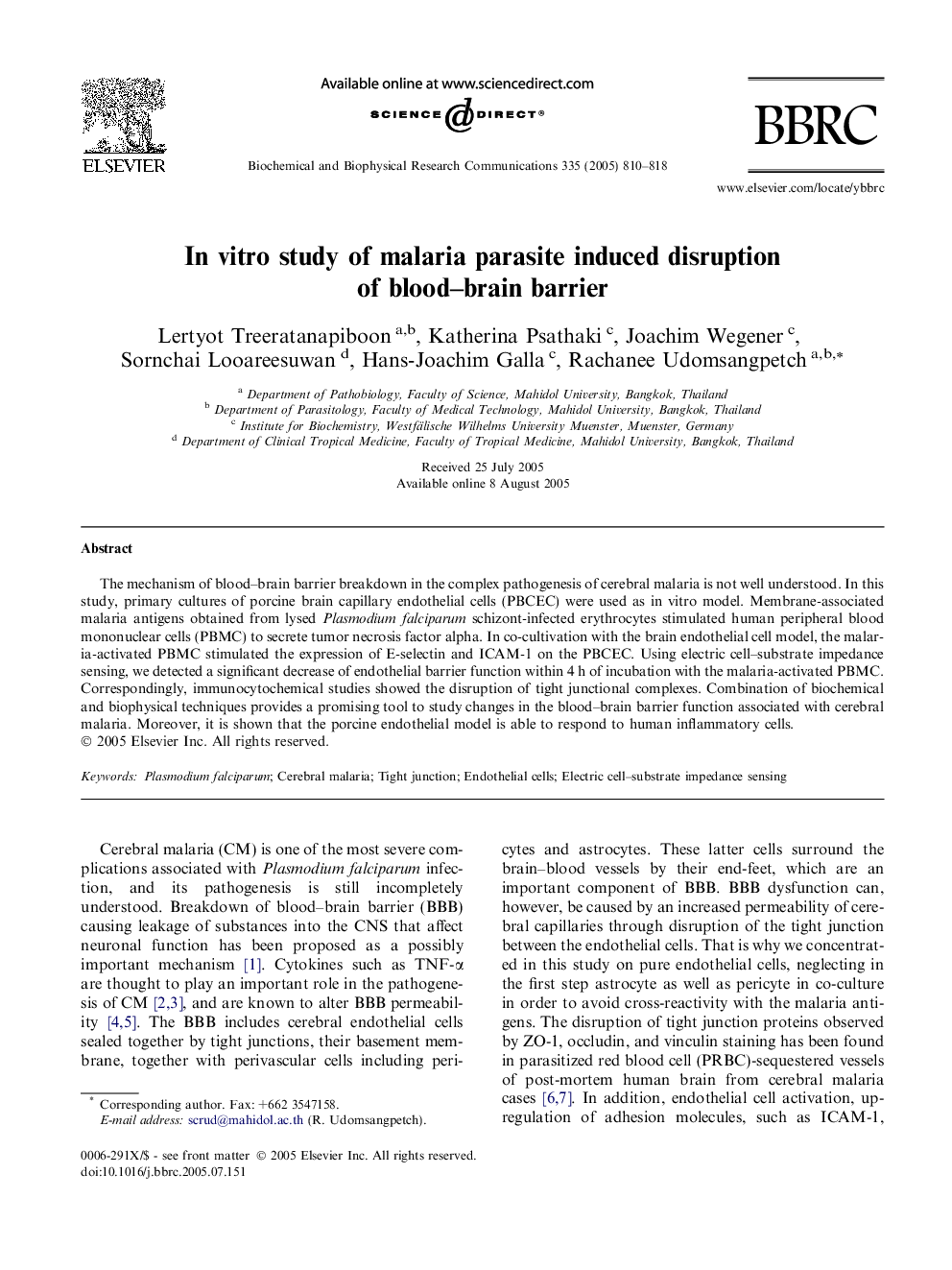| Article ID | Journal | Published Year | Pages | File Type |
|---|---|---|---|---|
| 10768746 | Biochemical and Biophysical Research Communications | 2005 | 9 Pages |
Abstract
The mechanism of blood-brain barrier breakdown in the complex pathogenesis of cerebral malaria is not well understood. In this study, primary cultures of porcine brain capillary endothelial cells (PBCEC) were used as in vitro model. Membrane-associated malaria antigens obtained from lysed Plasmodium falciparum schizont-infected erythrocytes stimulated human peripheral blood mononuclear cells (PBMC) to secrete tumor necrosis factor alpha. In co-cultivation with the brain endothelial cell model, the malaria-activated PBMC stimulated the expression of E-selectin and ICAM-1 on the PBCEC. Using electric cell-substrate impedance sensing, we detected a significant decrease of endothelial barrier function within 4Â h of incubation with the malaria-activated PBMC. Correspondingly, immunocytochemical studies showed the disruption of tight junctional complexes. Combination of biochemical and biophysical techniques provides a promising tool to study changes in the blood-brain barrier function associated with cerebral malaria. Moreover, it is shown that the porcine endothelial model is able to respond to human inflammatory cells.
Keywords
Related Topics
Life Sciences
Biochemistry, Genetics and Molecular Biology
Biochemistry
Authors
Lertyot Treeratanapiboon, Katherina Psathaki, Joachim Wegener, Sornchai Looareesuwan, Hans-Joachim Galla, Rachanee Udomsangpetch,
